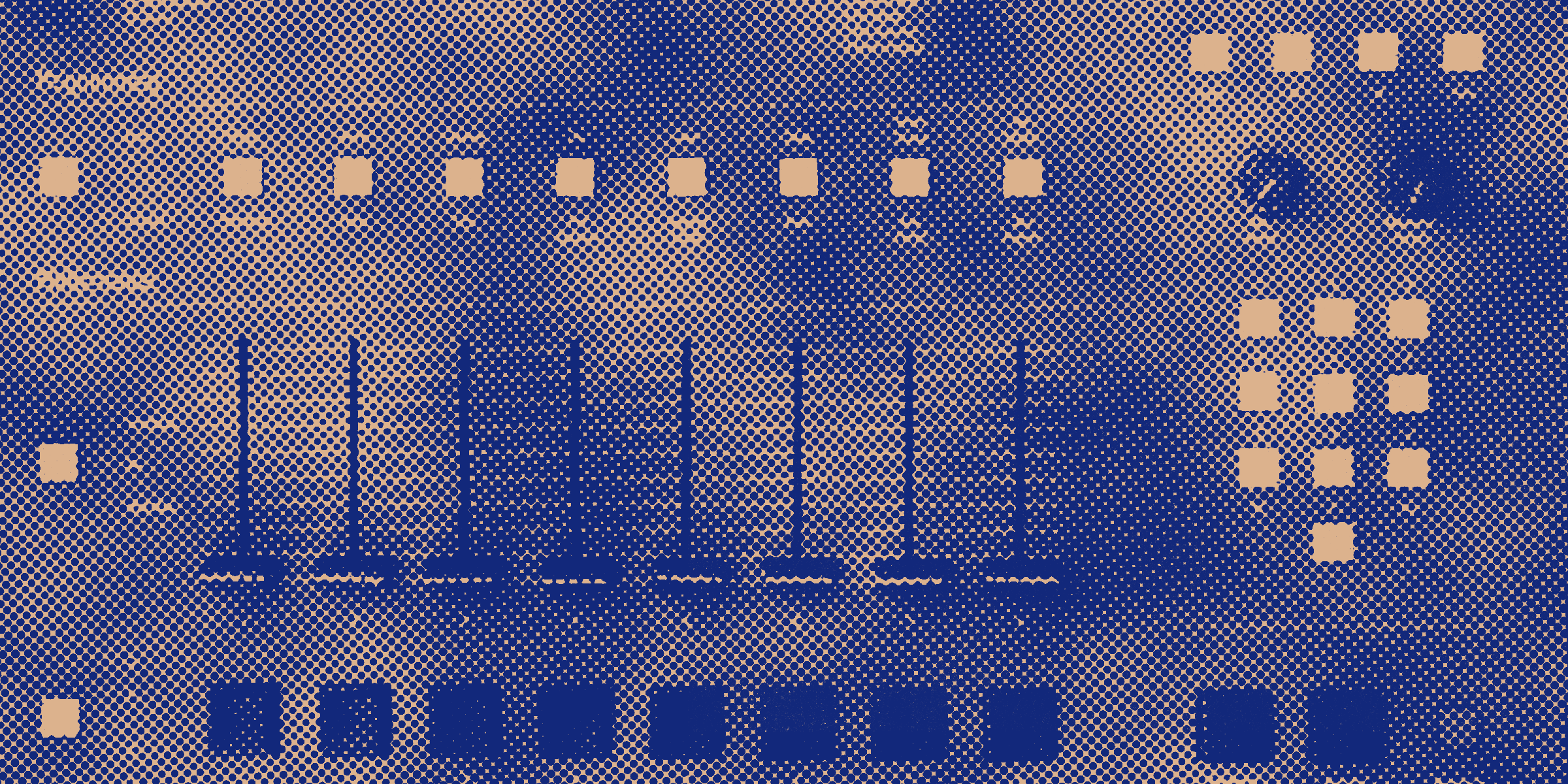The E-mu SP1200 (and the birth of hiphop sample culture)
If the Fairlight was the first commercial sampler, it was the E-mu SP1200 that broke through. And nearly broke the music industry in the process.

If you've never laid hands on the sampler that made sample culture a core part of hiphop as we know it, picture something bigger and heavier and simpler than you've probably imagined. It's... so limited. But it's also... so amazing. The E-mu SP1200 might be less well-known than the Akai MPCs that followed, but for those in the know, it's the instrument that revolutionized the music industry at a time that saw a boom in home recording, self-produced music, and no shortage of new questions about copyright and culture in the process.
What is the E-mu SP1200?
The EMU SP1200, introduced in 1987 by E-mu Systems, is a digital sampler that followed in the footsteps of the E-mu Emulator that was successful if modestly so. It's a 12-bit machine, a seemingly modest specification by today's standards, but one that gave it a distinctive sound that has been sought after for decades. With a maximum sampling rate of 26.04 kHz and a total sampling time of just over 10 seconds, the SP1200 was a tool that demanded creativity within constraints.
Why is the E-mu SP1200 Important?
The SP1200's importance lies in its unique sound and the way it shaped the music of the late 80s and 90s. Its place as a core part of the history of sampling is as much due to time, the passion of the artists that used it, and a sense of nostalgia (that arguably is playing out again in a similar way with fans of the Roland SP404s). Its 12-bit sampling engine imparted a warm, gritty character that became synonymous with the golden age of hip-hop, house, and techno. The crunch and punch of the SP1200's sound, coupled with its intuitive interface, made it a favorite among producers.
The SP1200 was more than just a sampler; it was a complete rhythm production center. With its integrated sequencer and drum machine capabilities, it allowed musicians to create entire tracks from sampled sounds. This was a game-changer, democratizing music production and giving rise to new genres.
What made the SP1200 so advanced technically?
- Sampling: The SP-1200 offered a maximum sampling rate of 26.04 kHz with a 12-bit resolution. While the sampling rate was relatively low compared to later samplers, the 12-bit depth contributed to its distinctive sound, characterized by its warm and crunchy quality.
- Memory: The SP-1200 had a total sample memory of 10 seconds, which could be divided among its 32 sample slots. Each sample slot had a maximum sample length of 32767 sample points. The limited sample memory encouraged users to be creative with sample selection and encouraged looping and truncating to fit within the available memory.
- Sequencing: The SP-1200 had a built-in sequencer that allowed users to create patterns and songs. It featured a maximum of 99 sequences, each capable of holding up to 99 measures. The sequencer had a resolution of 96 ppq (parts per quarter note) and could be synchronized with other devices using MIDI.
- Sound manipulation: The SP-1200 offered a range of sound-shaping tools to enhance and modify samples. It had a low-pass filter with resonance control, allowing users to shape the frequency content of samples. The sampler also featured a range of envelope controls, including attack, decay, sustain, and release, providing further control over the sound shaping process.
- Drum Machine: In addition to its sampling capabilities, the SP-1200 was renowned for its drum machine functionality. It had 16 individual drum pads, with each pad offering its own output, tuning, and level controls. The sequencer allowed users to program intricate drum patterns, making it a popular choice for creating drum loops and beats.
- Connectivity: The SP-1200 included various connectivity options. It featured both analog and MIDI inputs and outputs, enabling integration with other studio equipment. Users could sync the SP-1200 with external devices or control it via MIDI, expanding its capabilities within a larger setup.
- Storage: The SP-1200 used 3.5" floppy disks for sample and sequence storage. Users could save and load samples and sequences onto these disks, allowing for easy backup and exchange of sounds and projects.
Famous Music Made with the E-mu SP1200
The SP1200 was the secret weapon behind countless classic records. The Beastie Boys' "Paul's Boutique", Public Enemy's "It Takes a Nation of Millions to Hold Us Back", and Pete Rock's "Mecca and the Soul Brother" are just a few examples of albums that owe their iconic sound to the SP1200.
In the realm of electronic music, the SP1200 was equally influential. House music pioneers like Larry Heard and techno innovators like Carl Craig used the SP1200 to craft sounds that defined their genres.
The E-mu SP-1200 has been used extensively in various genres of music, but it gained particular prominence in the hip-hop scene during the late 1980s and early 1990s. Here are some notable examples of famous music created with the SP-1200:
- "Straight Outta Compton" by N.W.A.: The influential rap group N.W.A., known for their groundbreaking album of the same name released in 1988, heavily used the SP-1200 to create the beats and sample-based production on tracks like "Straight Outta Compton" and "Express Yourself."
- "93 'til Infinity" by Souls of Mischief: Released in 1993, this track from the hip-hop group Souls of Mischief's debut album was produced using the SP-1200. It's considered a classic example of the SP-1200's sound, featuring its signature gritty drums and sample-based loops.
- "The Infamous" by Mobb Deep: The SP-1200 played a significant role in the production of Mobb Deep's critically acclaimed album "The Infamous" released in 1995. Producers Havoc and Q-Tip utilized the SP-1200 to create the album's atmospheric and dark soundscapes.
- "Midnight Marauders" by A Tribe Called Quest: This influential album by A Tribe Called Quest, released in 1993, featured production work from Q-Tip, who used the SP-1200 extensively to craft the album's jazz-infused beats and sample-based grooves.
- "Paul's Boutique" by Beastie Boys: The Beastie Boys' landmark album released in 1989 was heavily sample-based and relied on the SP-1200 for its production. The album's intricate and eclectic sonic collage was made possible in part by the unique sound and capabilities of the SP-1200.
The Enduring History of the E-mu SP1200
Despite being discontinued in 1998, the SP1200's influence continues to reverberate through contemporary music. Its distinctive sound can be heard in the works of modern hip-hop producers like Madlib and J Dilla, and it remains a sought-after piece of gear for those seeking to capture the magic of the golden era.
The SP1200's enduring appeal is a testament to its timeless design and the unique character of its sound. It's a reminder that technology is not just about specifications and features, but about the creative possibilities it opens up.
Emulations and recreations
Over the years, there have been several emulations and recreations of the iconic E-mu SP-1200 sampler. These software and hardware offerings aim to capture the unique sound and functionality of the original SP-1200 while adding modern features and conveniences. Here are some notable examples:
Software Emulations
- Decimort by D16 Group: Decimort is a plugin that emulates the sound and character of vintage samplers, including the SP-1200. It offers sample rate reduction, bit-depth reduction, and other features to recreate the lo-fi crunch of the original sampler.
- Serato Sample: Serato Sample is a plugin sampler that includes an SP-1200 emulation mode. It provides similar sound characteristics, allowing users to achieve the gritty and vintage vibe associated with the SP-1200.
- SP950 by Wavesfactory: SP950 is a plugin emulation of the SP-1200 sampler (along with the Akai S950 that is also referenced in the name). It replicates the 12-bit sound, filter, and envelope characteristics of the original hardware.
- RX1200 by Inphonik: a VST emulation of the classic SP-1200 that holds close to the original, and celebrates the utility and aesthetic of the music made on it.
Hardware Recreations
- E-mu SP-1200 Software Controller: E-mu Systems released a software controller called the SP-1200 Software Controller. It's a dedicated hardware unit that provides an authentic interface for controlling SP-1200 software emulations on a computer.
- SP 2400 by Isla Instruments: The SP 2400 is a modern hardware sampler and sequencer inspired by the SP-1200. It features a similar workflow and sound, with expanded memory, increased sample rate, and additional modern features.
These are just a few examples of emulations and recreations available. It's worth noting that while these offerings strive to capture the essence of the SP-1200, each may have its own unique characteristics and variations in sound. Nonetheless, they provide alternatives for artists and producers who want to explore the SP-1200 sound without owning the original hardware.
Why the E-mu SP1200 Continues to Influence Culture
The SP1200 is more than a piece of music technology; it's a cultural icon. It symbolizes a time when creativity and innovation were exploding in music, driven by a machine that put the power of production in the hands of the many.
Today, the SP1200 continues to inspire new generations of musicians, producers, and beatmakers. Its sound is instantly recognizable, a sonic signature that evokes nostalgia while still sounding fresh and relevant. It's a testament to the enduring power of well-designed technology and the timeless appeal of great sound. In conclusion, the E-mu SP1200 is not just a sampler; it's a piece of music history. Its influence can be heard in the beats of yesterday, today, and maybe even the sounds of tomorrow.


